
Welcome to sanantoniosnakes.com! I am David, a snake enthusiast living in San Antonio, TX. Many people don't know that San Antonio is in fact full of snakes! You just need to know where to find them - they can often be shy and elusive. Some Texas snake species are more common outside of the city limits, in different parts of Bexar County TX, but many types of snakes are indeed common in the more urban parts of San Antonio. This guide is meant to help educate you about the beautiful snakes of San Antonio, and to help you identify the most common snakes of San Antonio, as well as the venomous snakes of San Antonio that you should learn to recognize and avoid. If you want more detail, click here for my complete list of ALL snake species in San Antonio. Remember the following:
- Most snakes of San Antonio are harmless and don't want to encounter you
- Venomous snakes exist but are uncommon in San Antonio, Texas
- Snakes eat rats and mice and are a valuable part of the Texas ecosystem
- Never kill a snake - if you leave a snake alone, it will leave you alone.
Common Snake Species in San Antonio
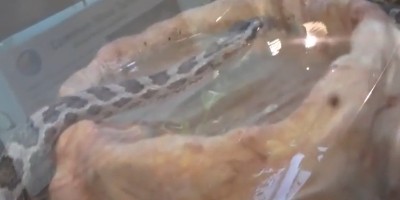 Great Plains Rat Snake:
One of the most common snakes in the San Antonio area, these brown and spotted snakes are generally harmless to people, though they will attack if aggravated. Their bite can’t break a person’s skin, so said aggravation will yield limited results against people. As the name implies, they prefer to eat rodents and are rather common in residential areas as a result.
Great Plains Rat Snake:
One of the most common snakes in the San Antonio area, these brown and spotted snakes are generally harmless to people, though they will attack if aggravated. Their bite can’t break a person’s skin, so said aggravation will yield limited results against people. As the name implies, they prefer to eat rodents and are rather common in residential areas as a result.
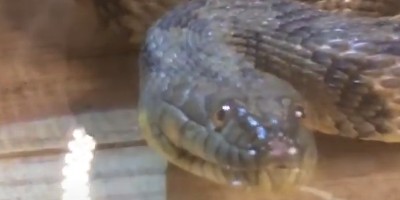 Diamondback Water Snake:
A non-venomous snake that resembles a rattler, they are fond of water and can be found near mostly any semi-permanent water source in the area. They have a dark pattern and are often covered in mud. Their diet is mostly fish, and if threatened will flatten their heads to appear like a venomous rattlesnake as a form of mimicry. If agitated enough they will bite.
Diamondback Water Snake:
A non-venomous snake that resembles a rattler, they are fond of water and can be found near mostly any semi-permanent water source in the area. They have a dark pattern and are often covered in mud. Their diet is mostly fish, and if threatened will flatten their heads to appear like a venomous rattlesnake as a form of mimicry. If agitated enough they will bite.
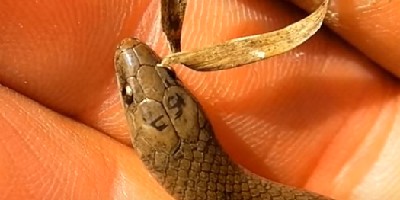 Rough Earth Snake:
These little snakes are only seven to ten inches in length. They were discovered several centuries ago but their scientific name has changed several times. Fond of ground cover, they tend to live in forests under leaves, logs, and rocks. They feed largely on earthworms but will also eat slugs, snails, insect eggs, and larva. Non-venomous and not a constrictor, they tend to just swallow their prey whole. At first glance, they may look like a worm, but the scales are noticeable enough that a second look will reveal their reptilian nature. Since they are fond of underbrush and mollusks, it is fairly common to find them around a residence. As they are harmless to people, they are valuable to gardeners for keeping slug and snail populations low.
Rough Earth Snake:
These little snakes are only seven to ten inches in length. They were discovered several centuries ago but their scientific name has changed several times. Fond of ground cover, they tend to live in forests under leaves, logs, and rocks. They feed largely on earthworms but will also eat slugs, snails, insect eggs, and larva. Non-venomous and not a constrictor, they tend to just swallow their prey whole. At first glance, they may look like a worm, but the scales are noticeable enough that a second look will reveal their reptilian nature. Since they are fond of underbrush and mollusks, it is fairly common to find them around a residence. As they are harmless to people, they are valuable to gardeners for keeping slug and snail populations low.
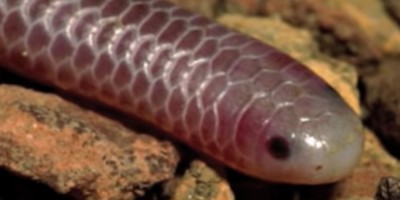 Texas Blind Snake:
These incredibly common snakes are the smallest species in the San Antonio area. Burrowers by nature, they are completely harmless to people, as their small mouths can’t even bite. Pinkish in color, they lack teeth and feed on insect larva. Though harmless, if threatened they will release a terrible smelling musk to deter predators. Their small size and coloration are very similar to an earthworm, and confusing the two is quite possible. The main identifier for the snake is that it has two small black eyes on its face. Worms, obviously, lack eyes, though at a glance they are very similar, as previously noted.
Texas Blind Snake:
These incredibly common snakes are the smallest species in the San Antonio area. Burrowers by nature, they are completely harmless to people, as their small mouths can’t even bite. Pinkish in color, they lack teeth and feed on insect larva. Though harmless, if threatened they will release a terrible smelling musk to deter predators. Their small size and coloration are very similar to an earthworm, and confusing the two is quite possible. The main identifier for the snake is that it has two small black eyes on its face. Worms, obviously, lack eyes, though at a glance they are very similar, as previously noted.
Venomous Snake Species in San Antonio
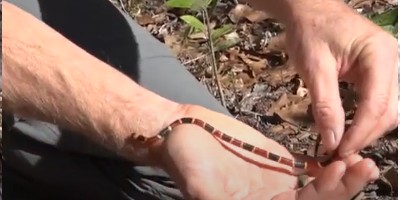 Texas Coral Snake:
A rather common venomous snake in the area, these brightly colored predators are actually incredibly timid. If left alone they don’t bother people, but they can and will bite if bothered. Generally, around two feet in length, these primarily nocturnal snakes feed mostly on other snakes. They have been known to eat their own kind, and if forced will eat small lizards as well. Their venom is dangerous and the snakes, to reiterate, will leave you alone if you do likewise.
Texas Coral Snake:
A rather common venomous snake in the area, these brightly colored predators are actually incredibly timid. If left alone they don’t bother people, but they can and will bite if bothered. Generally, around two feet in length, these primarily nocturnal snakes feed mostly on other snakes. They have been known to eat their own kind, and if forced will eat small lizards as well. Their venom is dangerous and the snakes, to reiterate, will leave you alone if you do likewise.
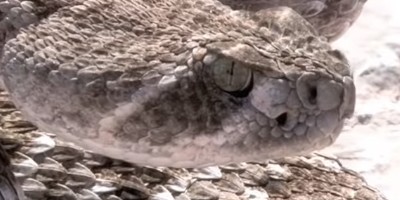 Western Diamondback Rattlesnake:
The quintessential southwestern rattlesnake, these common venomous snakes are responsible for the largest number of snakebites in the United States. With a varied habitat and brown speckled pattern, these snakes are often around four feet in length, though they can grow longer. The vast majority of their prey is small mammals, and they in turn are hunted by eagles, hawks, and roadrunners.
Western Diamondback Rattlesnake:
The quintessential southwestern rattlesnake, these common venomous snakes are responsible for the largest number of snakebites in the United States. With a varied habitat and brown speckled pattern, these snakes are often around four feet in length, though they can grow longer. The vast majority of their prey is small mammals, and they in turn are hunted by eagles, hawks, and roadrunners.
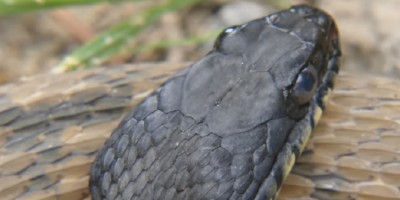 Cottonmouth:
Rarely found around San Antonio, these snakes are also known as water moccasins. Venomous and usually nearing three feet in length, they are fond of water and tend to live around creeks, ponds, swamps, and the like. They have been observed swimming in saltwater. Generally brown with black bands and spots, they will eat pretty much anything they can swallow, including fish and even members of their own species. The name comes from their white mouths, incidentally.
Cottonmouth:
Rarely found around San Antonio, these snakes are also known as water moccasins. Venomous and usually nearing three feet in length, they are fond of water and tend to live around creeks, ponds, swamps, and the like. They have been observed swimming in saltwater. Generally brown with black bands and spots, they will eat pretty much anything they can swallow, including fish and even members of their own species. The name comes from their white mouths, incidentally.
If you're unsure, you can email me a photo of the snake at info@sanantoniosnakes.com and I will email you back with the snake's species. If you found a snake skin, read my Found a Skin? page, and you can email me a photo of the skin, and I'll identify the snake for you. If you need professional San Antonio snake removal help, click my Get Help page, or see the below website sponsor I found, who provides that service.
Remember, the term is not poisonous snakes of San Antonio, it's venomous snakes of San Antonio. Poison is generally something you eat, and venom is injected into you. That said, dangerous snakes are very rare in San Antonio. The few venomous snakes of Bexar County are rarely seen. But they are commonly misidentified, so learn about all the snake species of San Antonio in order to correctly identify them. These snakes are usually also found in the surrounding towns of Converse, Helotes, Universal City, Elmendorf, Live Oak, Alamo Heights, Leon Valley, Windcrest, Von Ormy, Shavano Park, Castle Hills, Balcones Heights, Terrell Hills, Olmos Park, Hollywood Park, Hill Country Village, Somerset, China Grove, Saint Hedwig, Timberwood Park, Grey Forest, Kirby, Cross Mountain, and the surrounding areas.
Read our article about:
So snakes feel pain?
sanantoniosnakes.com domain and hosting costs made possible by the generous support of this sponsor:
